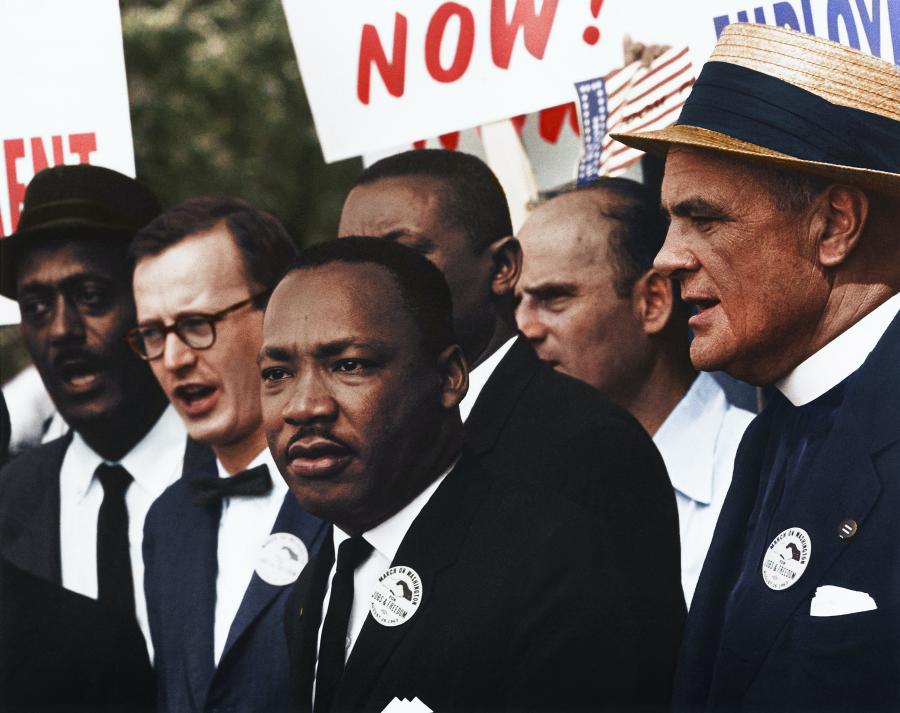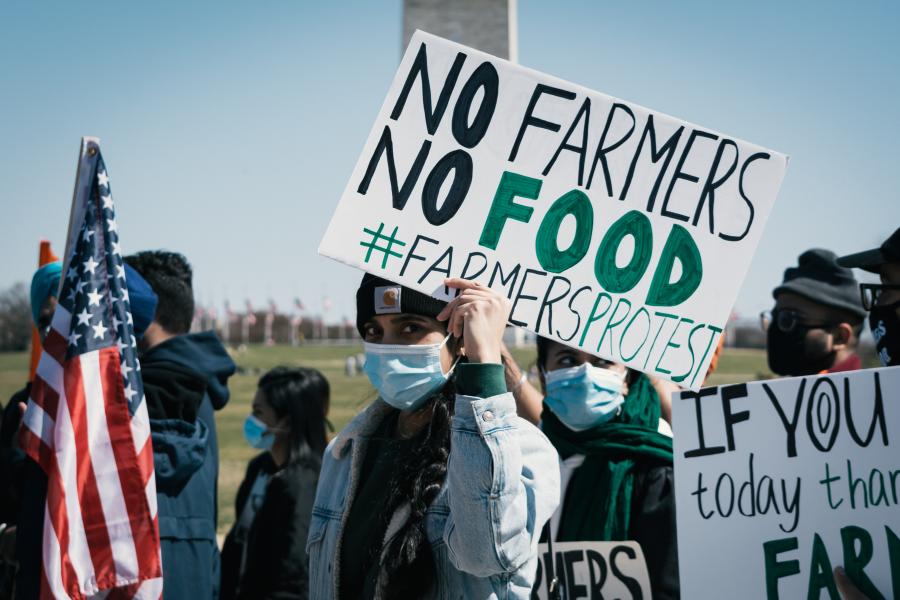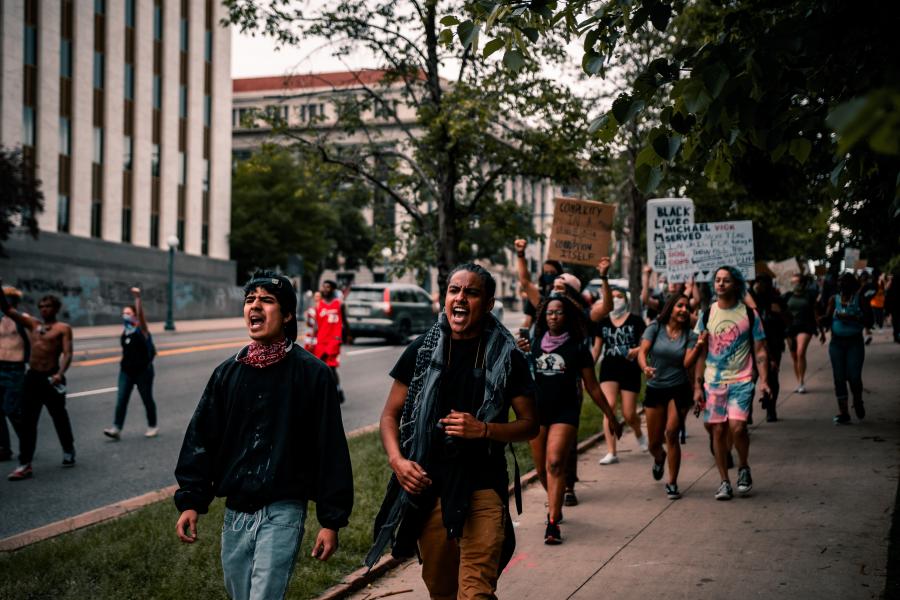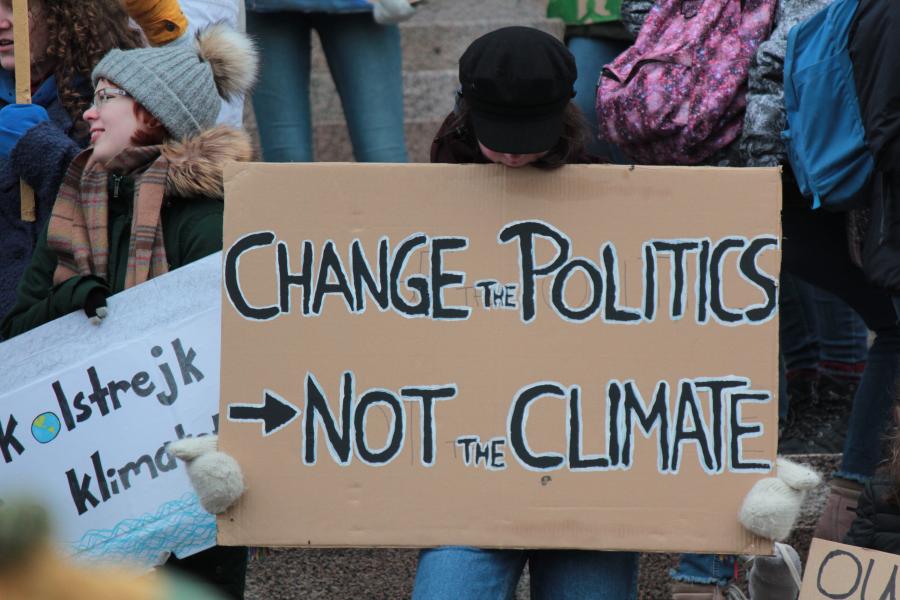
The Risks of Civil Disobedience Influenced by Online Culture
Movements including Wikileaks, Extinction Rebellion and the Dutch farmer's protests show that civil disobedience seems to be on the rise (Hayward, Larsson, & Sly, 2020). This also demonstrates how contemporary society became more and more politicized. Many civil disobedience groups refer to Henry David Thoreau as their inspiration. Nevertheless, various philosophers wrote about the topic, for instance, John Rawls and Hannah Arendt (Rawls, 1971; Arendt, 1972). When we look at contemporary disobedience movements like Extinction Rebellion and the Dutch farmer's protests it seems that these movements rather polarize the political debate than support the progression of society.
When we look into the past, civil disobedience movements, like the Indian independence movement, the civil right movement, and the anti-apartheid movements, had great social successes (Eschner, 2017; Zunes, 1999). Hannah Arendt supports the phenomenon of Civil Disobedience in her essay "Civil Disobedience". First, she analyses the history of the success of civil disobedience and criticizes Thoreau's arguments to subsequently provide two characteristics that the civil disobedience movement should meet. These are, (1) civil disobedience must be made public within a group, and (2) the movement must accept the current system and should, therefore, be nonviolent.

The relevance of civil disobedience writings from the past is questionable within current society. We live in a globalized world that is highly influenced by online culture. As a result, these writings lost their relevance to achieve the intended goal of civil obedience to convince majorities. Instead, it rather polarizes society further and in some cases endangers people directly. I will show, based on Ernesto Laclau's theory of political movements and contemporary societal developments, that civil disobedience actions within contemporary society that meet Arendt's characteristics still bring undesired consequences.
The History of Civil Disobedience
In the 1840s, Thoreau was a fairly unknown intellectual that condemned American politics and in particular slavery and the Mexican-American war including the annexation of Texas (McElroy, 2005). When a local tax collector stopped Thoreau in 1846 and demanded him to pay six years of poll tax arrears he refused, as a form of civil disobedience, because he did not want to provide material support to a state that commits injustice (Thoreau, 1849). Therefore, he had to spend a night in jail. The next day, Thoreau was freed, probably after a family member paid his taxes against his wishes, although that has never been confirmed (Rosenwald, 2006). This event had a great influence on Thoreau’s thinking and motivated him to write his essay “Resistance to Civil Government”. His essay was largely unread in his lifetime but finally influenced many public figures like Mahatma Gandhi, Martin Luther King, and John F. Kennedy (Christie, 1965).
Thoreau claims that democracy is merely a phase in the progress of enlightening society
Nowadays, civil disobedience movements still refer to Thoreau as their inspirator. He claims in his essay that governments are in many cases more harmful than helpful, and democracy is no cure for this problem. He claims that democracy is merely a phase in the progress of enlightening society starting with absolute monarchy changing to limited monarchy and finally democracy. According to Thoreau, democracy is not the last phase and governments have to take the next step. He claims that a state can only be enlightened when governments acknowledge the individual as a higher and independent power and that all its power is derived from the individual so the government should treat the individual accordingly (Thoreau, 1849).
Moreover, in Thoreau’s opinion, majorities do not acquire wisdom and justice simply because they are the majority. He argues that conscience is more important in deciding what is just than governmental laws. Therefore, he argues that the only obligation he has is to do what he thinks is right, at any time. Thus, he relates his morality to the law. Furthermore, Thoreau claims in his essay that a government that governs the least is the best. Nonetheless, he is no anarchist who claims that a government is best if it does not govern at all. Civil Disobedience is, according to Thoreau, a tool to improve rather than abolish the government.

The Lack of Thoreau's Theory
Thoreau is often criticized because his essay lacks a clear demarcation line between a private criminal act and a political civil disobedience act. His essay remains an elaboration of his own experience which indicates that citizens should use their conscience politically to act privately against the law. One of his critics is Arendt. Her essay on civil disobedience (1972) briefly explains Socrates' and Thoreau’s theories about civil disobedience and subsequently criticizes them. The critique particularly focuses on Thoreau’s theory. She finds that conscience is unpolitical and too subjective to rely on since individual conscience could justify more or less all political beliefs, which does not guarantee moral actions but is rather subjective. This subjectivity can result in civil disobedience acts where one's conscience stands simply against someone else’s conscience. For instance, someone who argues that the prosperity level of the present situation is for the current generation more important than climate change measures motivates it with a conscience. On the other hand, someone who demands more climate change measures to protect the next generations might also be motivated by their conscience. Hence, due to the subjectivity of conscience, conscience is not enough to motivate action.
The lack of ethical introspection and thoughtlessness let normal people participate in the Nazi holocaust
Moreover, Arendt argues that, even in a specific case where the civil disobedience act is morally unassailable to justify whether it is subjective or not, conscience should remain unpolitical. The decision to political action and civil disobedience by an individual is, according to Arendt, more likely to maintain the individual’s moral purity instead of initiating political change and convincing the majority. This again exposes the subjectivity of an individual act of civil disobedience. Importantly, Arendt does not reject conscience in all cases as a source to rely on, but only in political actions. In her book Eichmann in Jerusalem, Arendt (1963) develops the ethical theory of the banality of evil that argues that the lack of ethical introspection and thoughtlessness let normal people such as Adolf Eichmann participate in evil acts like the Nazi holocaust. She outlines a demarcation of whether people should appeal on conscience or not and argues in her essay on civil disobedience that conscience does not imply what to do but what not to do. In other words, people should rely on their conscience to refuse actions that are obviously morally wrong, like participating in genocide. While civil disobedience is not particularly a refusal of a wrong moral action but rather an action itself, breaking laws, which has to be based on more than mere conscience.
Arendt argues that civil disobedience should have the ambition to convince the majority with a minority. She develops two main characteristics in her essay that civil disobedience movements should meet for legitimate action. First, civil disobedience has to be done in a group to overcome the issue of individual conscience and the act should be done in public, so the intended goal of convincing a majority would be possible. Second, the movement should accept the current political system, and therefore be nonviolent to prevent a revolution. The first characteristic is a reaction to the individual conscience issue of Thoreau’s theory. Arendt seems to be influenced by Immanuel Kant since she makes a comparable distinction between the private and public sphere like Kant (1784) did in his essay "An Answer to the Question: What is Enlightenment?". Kant argues that freedom is required for Enlightenment but distinguishes between public and private use of reason. Public use of reason should be allowed at any time. This means that people should argue as much as they want about any issue they like. On the other hand, the private use of reasoning should be restricted. In other words, whether people find their taxes too high or not, they should pay their taxes anyhow but should argue about the cost in public.

However, to some extent, Arendt opposes Kant’s principle since Kant merely appeals to the male intellectuals and philosophers that, so to say, can become enlightened. He excludes women and children. While Arendt, obviously not excluding women, appeals to all citizens. Still, they both argue, Kant regarding reasoning and Arendt regarding civil disobedience, that the act should be done in public, while private acts are just criminal acts. Arendt argues that civil disobedience arises when a significant amount of people are convinced that the current situation no longer functions and complaints are not heard or that the legality and consistency of the government in charge are very doubtable. Arendt gives the example of the seven years of an undeclared war in Vietnam. The United States never declared war on Vietnam during its involvement in Vietnam which lasted until 1973. A similar but more recent example is the undeclared war in Iraq in 2003 (MacAskill & Borger, 2004). Obviously, this first characteristic significantly distinguishes itself from Thoreau’s theory of individual civil disobedience. Arendt argues, like Kant, that civil disobedience in private, avoiding the public eye, like Thoreau’s is merely a criminal act. Indeed, nowadays, not paying tax would, in most cases, be considered criminal instead of a civil disobedience act.
The second characteristic Arendt provides is an attempt to distinguish between civil disobedience movements and revolutionary movements. Although both movements wish to change the political situation, civil disobedience should accept the current system and merely want to change this system, while revolutionary movements want to overthrow the hegemony and organize an election or become the new hegemony. As she argues: “It is well known that the most radical revolutionary will become a conservative the day after the revolution” (Arendt, 1972, p. 78) Therefore, civil disobedience aiming to change particular laws and situations should remain nonviolent to avoid becoming revolutionary and finally conservative. Gandhi and Martin Luther King are great examples of nonviolent civil disobedience. They organized significant collective events without intended violence to demonstrate their standpoints and the injustice that was done. As a result, the awareness of the majority increased, and finally, unjust situations were changed. Aside from the fact that nonviolence avoids a revolution, violent acts possibly endanger people which is something that obviously should be avoided.
The Polarizing Consequences of Civil Disobedience
Polarization and radicalization have become global challenges to contemporary societies (Moisés, 2019). I argue, based on Ernesto Laclau’s (2005) point of view of political groups that collective civil disobedience does not particularly strengthen the argument and convinces the majority but rather supports current polarization. Moreover, I argue that the current online culture causes radicalization that also supports this polarization. If civil disobedience movements are acting collectively to influence the political debate, they are considered to be political groups. Arendt argues that these groups are bound together by common opinion and not by common interest and that the number of those with whom this opinion is associated demonstrates the strength of this opinion. In contrast, Laclau (2005) argues that if a large number of people join a political collective, a message tends to lose its value, i.e. the more people involved, the emptier the message. Laclau’s investigation is mainly focused on populism in the political discourse. He claims that every political movement is, to some extent, populist and that this is not political or ideological but an ontological phenomenon (Laclau, 2005).
Political movements tend to radicalize and polarize instead of causing a shift where minorities convince the majority
According to Laclau, political movements, so also civil disobedience movements, are based on a chain of equivalence and empty signifiers. A chain of equivalence is a chain that consists of various unfulfilled demands of citizens. This results in an equivalence among people in terms of a lack of pervasive demands. As a result, movements lose intention when they grow in extension. This clearly opposes the view of Arendt that assumes that individuals in civil disobedience collectives share more or less the same opinion. Subsequently, according to Laclau, movements become anti-institutional which divides society into different fronts: the powerful and the underdog. This anti-institutionalism is not in particular against the government in power, since Laclau argues that political parties in power are also populistic and place themselves in the underdog position regarding other institutions. The chain of equivalence results in empty signifiers which are the accumulation of various demands that are represented as one demand. In other words, the support of the group grows while the message and goal of the group become more unclear.
An example is the meaninglessness of slogans like ‘Make American great again’. This phrase does not refer to something specific but is used as an extensive political message. An example of a civil disobedience movement is the slogan 'Freedom Now' from the Civil Rights, this empty signifier remains vague and most people are supposed to support freedom, however, many have different opinions regarding racial segregation and freedom. Again, this highlights the problem of subjectivity.
Demagogues, but also politicians, increasingly appeal to fake news and pseudoscience
Notably, Laclau does not claim that populist movements are a threat to democracy or society. Nevertheless, an us-versus-them situation emerges, resulting in polarization. This polarization is obviously happening in the current global society (Moisés, 2019). Social media expose polarization in contemporary debates regarding the EU, Immigration, etc. (Arthur, 2019). This polarization has clearly manifested in the last decade in several political situations like Brexit which moved forward due to a referendum where 52% of the voters were in favor (BBC, 2016). I claim that in the current society it is indeed more likely that civil disobedience contributes to polarized situations instead of supporting the progression of society.
Online culture, social media in particular, causes radicalization of individuals and political collectives resulting in increased polarization. Human beings are likely to discover and discuss topics that align with their pre-existing beliefs. The Internet made these more accessible. Therefore, it becomes easy for people to remain in their own bubbles and exclude people with different views (Pariser, 2011). Moreover, social media websites such as Facebook and YouTube have algorithms that offer content that is slightly more radical than users were previously exposed to. As a result, the opinion of people using these media slightly shifts to one side of the political debate (Ledwich & Zaitsev, 2020). Therefore, political movements tend to radicalize and polarize instead of causing a shift where minorities convince the majority (Arthur, 2019). Hence, I argue that the current social media era results in a more complicated world where it is less likely to convince the majority based on the characteristic of collective civil disobedience in the public eye as Arendt suggests.
The Dutch politician Thierry Baudet claimed recently that he is convinced that the world is governed by evil reptiles
In other words, the number of people that support a political collective does not necessarily strengthen the standpoint of the movement but rather weakens the message due to the chain of equivalence and empty signifiers. As a result, an us-versus-them situation emerges which causes polarization instead of convincing the majority. In addition, online media influence global society, which radicalizes and therefore also causes polarization. These two arguments demonstrate that Arendt’s strategy of civil disobedience is more likely to contribute to polarization instead of a positive contribution to the current political situation.
How Civil Disobedience Movements Endanger People
The second characteristic of civil disobedience argues that civil disobedience movements should avoid becoming revolutionary by accepting the current governmental institutions. In the previous section, Laclau already refutes this argument to some extent since he argues that every political movement is, in a way, anti-institutional. However, Arendt intends that civil disobedience action should be nonviolent with this argument. I argue that nonviolent civil disobedience possibly endangers nonparticipating citizens in contemporary times of post-truth and online culture. I identify two different forms of civil disobedience that could endanger people. I first claim that civil disobedience groups that base their opinion on pseudoscientific beliefs could be harmful. Second, online civil disobedience groups that do not take the consequences of their acts into account when leaking sensitive data online endanger various parties.
In current society, skepticism about truth has increased. Demagogues, but also politicians, increasingly appeal to fake news and pseudoscience (Mercier, 2019). The Dutch politician Thierry Baudet claimed recently that he is convinced that the world is governed by evil reptiles. While since the beginning of Covid-19 protest groups around the world claimed that the virus is fake and used by governments to gain more power. This resulted in various demonstrations around the world where measures of social distancing were violated. This violation increased the chance of getting infected by Covid-19 for other citizens as well. Another example is the pseudoscientific statement about the association between autism and vaccinations that has resulted in various protest movements like anti-vaxxers. Anti-vaxxers claim that there is a causality between vaccinations and autism and reject vaccinations for their children and protest against vaccinations for others. Although there are debates in several governments to impose sanctions upon people who reject vaccinations for their children, it is in most cases still legal. Therefore, this movement might not be considered a civil disobedience group. Nevertheless, there are debates in various countries to take measures against these protests and these movements profile themselves as civil rights activists (MacKenzie, 2019). This pseudoscientific protest causes a low vaccination rate that results in dangerous situations for vaccinated people as well. As a result, there have been several measles outbreaks in developed countries due to the relatively high rate of unvaccinated children, for instance, in California in 2014 (Cataldi, Dempsey, & O'Leary, 2016).
Moreover, this protest allows parents to make unfounded decisions that endanger their innocent children. For the last decades, mistrust of medical experts and social media have contributed to this vaccination/autism issue, while academic research with an enormous amount of data has indicated that there is no causality between vaccination and autism (White, 2014). Based on Arendt’s theory people could argue that deciding to get no vaccinations is an individual question that could be based on conscience and therefore a legitimate decision. Because Arendt argues in her essay that conscience should not lead to what to do but what not to do. However, this changes in case a movement is created that wants to convince the majority of its belief of the harmfulness of vaccinations (Blume, 2006). This case demonstrates that, although the people are nonviolent, there is a possible danger of civil disobedience that is merely based on a number of people that are bounded by opinion. In short, although protests based on the number of opinions might overcome the individual conscience case of Thoreau, it could endanger citizens when movements base their opinion on pseudoscience and reject the advice of experts.
WikiLeaks’s strategy meets the characteristic of being nonviolent but still causes dangerous situations for individuals
Furthermore, besides these political groups founded on unconventional beliefs, online culture causes new issues regarding civil disobedience. When valuable documents from the government are released online, civil disobedience movements behind these acts can cause a lot of damage. The most famous example of an online civil disobedience movement is Wikileaks. This movement leaks classified news from anonymous sources like governmental reports about war situations or business reports about fraud (Fildes, 2010). I would not deny that WikiLeaks has done some tremendous work to improve human rights. For example, it leaked a video of an airstrike by the US army in Baghdad during the Iraq War where two war correspondents of Reuters were killed, and they published a manual for operations at the US prison at Guantanamo Bay in 2007, which confirms that the prisoners were not allowed to speak to representatives of the Red Cross. Nevertheless, some leaks from Wikileaks caused very sensitive personal data to become public. For instance, they leaked data that belongs to hundreds of ordinary citizens including medical files of rape victims, sick children, and mentally ill people (Woolfs, 2016). Moreover, they leaked war logs about the wars in Iraq and Afghanistan, including information that endangered USA troops, their allies, and Afghan partners (Leigh, 2010). Obviously, WikiLeaks’s civil disobedience strategy meets the characteristic of being nonviolent but still causes in various cases enormous dangerous situations for individuals. Based on the former examples of nonviolent political movements that still endanger innocent citizens, I argue that the movements meet the requirement of nonviolence and the intention might be not to endanger people, but it still does. Therefore, I assess that this second characteristic is not sufficient for legitimate civil disobedience.
Conclusion
After exploring Thoreau’s essay “Resistance to Civil Government’ and Arendt’s critique of Thoreau, I investigated if her characteristics fit in the current society. Firstly, I argued that civil disobedience groups, that become political collectives, lose in intention when they grow in extension. These groups are based on an equivalence chain and their message are empty signifiers. As a result, political groups, thus civil disobedience movements, contribute to global polarization rather than convince minorities. Moreover, the human character traits in the online culture of algorithms cause people to radicalize and remain in their bubble which contributes to this polarization as well. Thereafter, I argued based on examples, that the nonviolent characteristic is not sufficient to protect nonparticipating citizens. I distinguished between groups based on unconventional beliefs such as pseudoscience and groups that are active online as civil disobedience movements that do not take the consequences of sensitive data into account. This investigation allowed me to conclude that Arendt’s characteristics have several risks and therefore do not fit the current society's needs. Instead of minorities convincing majorities, polarization increases, and people are endangered.
Bibliography
Arendt, H. (1963). Eichmann in Jerusalem: A Report on the Banality of Evil. New York.
Arendt, H. (1972). The Crises of the Republic. Boston: Houghton Mifflin.
BBC. (2016). EU Referendum. London: BBC.
Blume, S. (2006). Anti-vaccination movements and their interpretations. Social Science & Medicine 62, 628-642.
Cataldi, J. R., Dempsey, A. F., & O'Leary, S. T. (2016). Measles, the media, and MMR: Impact of the 2014–15 measles outbreak. Vaccine 34.
Christie, J. A. (1965). Thoreau as World Traveler. New York: Columbia University Press.
Fildes, J. (2010, December 2010). What is Wikileaks? BBC.
Kant, I. (1784). An Answer to the Question: What Is Enlightenment. Berlinische Monatsschrift .
Laclau, E. (2005). Populism. What's in a Name. In F. Panizza, Populism and the Mirror of Democracy (pp. 32-49). New York: Verso Books.
Ledwich, M., & Zaitsev, A. (2020). Algorithmic extremism: Examining YouTube's rabbit hole of radicalization. First Monday, 25 (3).
McElroy, W. (2005). Henry David Thoreau and “Civil Disobedience,”. Freedom Daily.
Mercier, H. (2019). Not Born Yesterday. Princeton: Princeton University Press.
Moisés, N. (2019, January 23). The globalization of polarization. El País.
Pariser, E. (2011). The filter bubble: What the Internet is hiding from you. New York: Penguin Press.
Rawls, J. (1971). A Theory of Justice. Cambridge: Harvard University Press.
Rosenwald, L. (2006). The Theory, Practice and Influence of Thoreau's Civil Disobedience. In W. Cain, A Historical Guide to Henry David Thoreau. Cambridge: Oxford University Press.
Thoreau, H. D. (1849). Resistance to Civil Government. Æsthetic Papers.
White, E. (2014). Science, Pseudoscience, and the frontline Practitioner: The Vaccination/Autism Debate. Journal of Evidene-Based Social Work 11:3, 269-274.
Zunes, S. (1999). The Role of Non-Violent Action in the Downfall of Apartheid. The Journal of Modern African Studies, 37, 137-169.